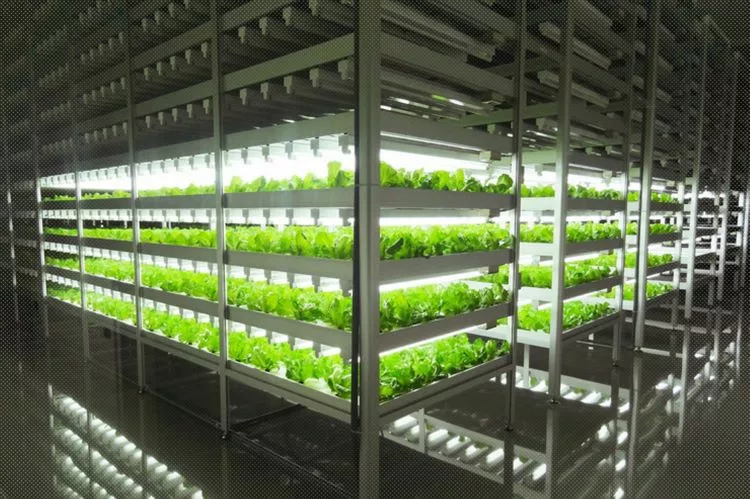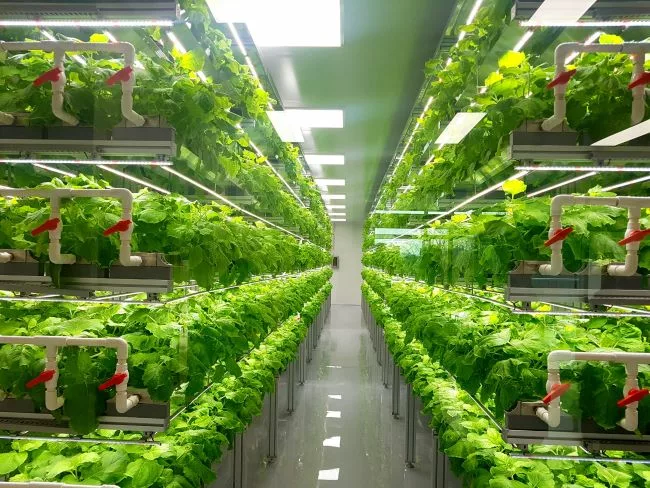LED grow lights are a relatively new technology, and the cost of research and development is still high. The materials used to make LED grow lights, such as LEDs, drivers, and heat sinks, are more expensive than the materials used to make traditional grow lights. LED grow lights are more complex to manufacture than traditional grow lights, which contributes to their higher cost. The demand for LED grow lights is high, which also contributes to their higher cost.
Professional LED grow lights
Professional LED grow lights are powerful and efficient lighting solutions designed to meet the specific needs of commercial growers and large-scale cultivation operations.
Professional LED grow lights advantages
Superior efficiency: LEDs convert a larger portion of their energy into usable light, resulting in significantly lower electricity bills and a reduced environmental footprint.
Targeted spectrums: Professional LED grow lights can be precisely tailored to emit the specific light spectrums needed for different plant stages and growth cycles, optimizing plant development and promoting higher yields.
Long lifespan: These lights boast extended lifespans, typically lasting over 50,000 hours, minimizing replacements and maintenance costs.
Cooler operation: Unlike HIDs, LEDs generate minimal heat, reducing the risk of burning plants and simplifying temperature control in greenhouses.
Greater control: Many professional LED grow lights offer advanced features like dimming capabilities, spectrum adjustments, and timers, allowing for precise control over the lighting environment.

Reasons for the higher cost of LED grow lights
Advanced Technology: Compared to basic incandescent bulbs, LED grow lights utilize sophisticated technology involving efficient light emitting diodes (LEDs) and specialized components. These components are carefully selected and engineered to deliver a specific spectrum of light crucial for plant growth, making them more intricate and costly to produce.
Research and Development: Developing efficient and effective LED grow lights requires significant research and development (R&D) investments. This includes research on optimal light spectrums for different plant types and growth stages, durability testing, and ensuring consistent performance throughout the long lifespan of the lights. These R&D costs are ultimately reflected in the final product price.
High-Quality Materials: To ensure durability, reliability, and optimal performance, LED grow lights often employ high-quality materials like specialized lenses, drivers, and heat sinks. These materials often have higher production costs compared to simpler components used in conventional lighting solutions.
Targeting a Niche Market: Unlike general-purpose LED lights for everyday use, LED grow lights cater to a specific niche market of growers and nurseries. This smaller market size can sometimes limit the economies of scale achieved in mass production, potentially translating to higher per-unit costs compared to widely used consumer lighting products.
Evolving Technology: While LED technology continues to advance, it's still a relatively young and evolving field. As the technology matures and production processes become more optimized, we can expect gradual price reductions over time.
LED grow lights precautions
The initial investment in LED grow lights might seem higher, but their long lifespan (often exceeding 50,000 hours), superior energy efficiency, and potential for increased yields can lead to significant cost savings and a positive return on investment in the long term.
As LED technology matures and becomes more widely adopted, we can expect both prices to decrease and available options to become more diverse, making LED grow lights accessible to a broader range of growers.

FAQ
What are LED grow lights?
LED plant growth light is a lighting fixture specially designed for plant growth. It uses LED lights to emit light of specific wavelengths, which can promote photosynthesis and growth of plants.
What are the advantages of LED grow lights?
Energy saving
Environmental friendly
long life
Spectrum adjustable
How to choose LED grow lights?
Plant Type: Different plants have different needs for light spectrum. For example, leafy vegetables require more blue light, while flowering plants require more red light.
Plant growth stages: Plants have different spectral needs at different growth stages. For example, the seedling stage requires more blue light, while the flowering stage requires more red light.
Light intensity: Light intensity that is too strong or too weak will affect the growth of plants. Generally speaking, the seedling stage requires lower light intensity, while the mature stage requires higher light intensity.
Usable area: The power of LED plant growth lights is directly proportional to the lighting area. Therefore, it is necessary to choose LED plant growth lights with appropriate power according to the planting area.
How to use LED grow lights?
Install the LED grow light at a suitable location above the plants.
Adjust the proportion of the spectrum according to the different growth stages of the plant.
Adjust the light intensity according to the light needs of the plants.
Check your LED grow lights regularly to make sure they are working properly.
Can LED grow lights replace sunlight?
LED grow lights can simulate sunlight, but they cannot completely replace sunlight. In addition to the light required for photosynthesis, sunlight also contains other spectrums such as ultraviolet rays, which also play a certain role in the growth of plants.
Are LED grow lights harmful to humans?
The light emitted by LED grow lights is harmless to humans. However, when using LED grow lights, you should avoid looking directly at the light source.
How long can LED grow lights be used?
LED grow lights have a service life of up to 50,000 hours. However, as the use time increases, the light intensity of LED plant growth lights will gradually decrease. Therefore, it is recommended to replace LED grow lights every 3-5 years.
